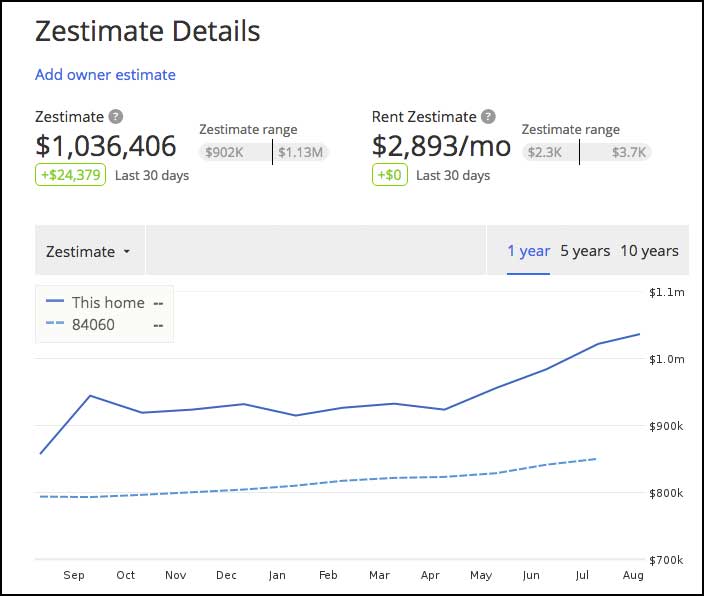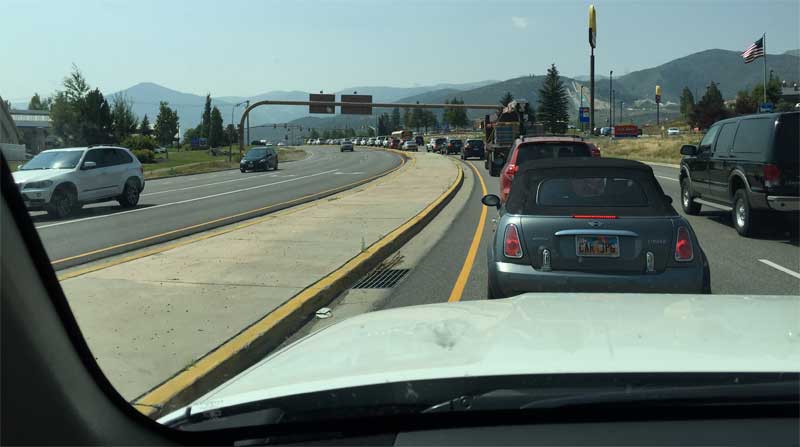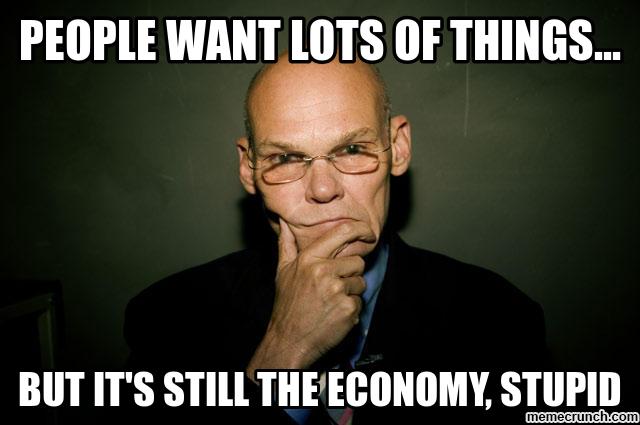Are You or Your Group Against the Park City School District Bond?
I’ve heard that there may be multiple groups forming to oppose the Park City School bond. If you happen to read the Park Rag and are interested in working together, let me know and I’m happy to put the groups in contact with each other.
Also, just to put it on the record, the Park Rag is not pro-bond or anti-bond. There are many good arguments on both sides of the issue. That said, the pro-bond folks have an obvious advantage. So, if I can help even the playing field by connecting people within the community, I’m happy to do that.
So, if you or your group is interested in talking with other people who are questioning the school bond, please email me at and I’ll confidentially pass the information along. If you or your group is interested in supporting the bond, I’ll point you to this Park Record article.
I’m So Tired of Hearing How Property Values Will Increase If We Pass the Park City School District’s $56 Million Bond
It’s everywhere. “The upcoming school bond is great because it will make our schools world class and thus raise our property values. Who can argue with that?” It must be some talking point coming out of the School District’s “YES” campaign for their bond because you hear it everywhere.
Most recently I read it in the Park Record’s guest editorial from last Saturday. “At $50 per square foot the increase in value associated with a top rated school district is $130,000 [on my house]…I am old and I don’t have any relative being taught in the school district, but I’ll take that.”
I get it. The adage that good schools raise home prices is well known. Let me ask you a question though:
Are Park City Schools currently among the top in the state?
You probably answered yes and that’s fair. People love Park City schools. So, if we invest $65 million in building a new school, adding on to another, and building a field house, how exactly does that raise my property value? I’d like to believe the guest editorialist, but I have a difficult time understanding how moving from being an above average school to being an above average school increases my property value.
You may may say, “but Park Rag, by going all these things we will have top notch facilities and it will increase our test scores.” I hope so, because our school district states that it is evidence based… so if we invest $65 million and our SAGE test scores don’t go up in proportion to the money spent, that doesn’t seem like money well spent. However, let me ask another question:
How much did your property value drop this year?
What… your property is worth more today than a year ago? That’s impossible. Didn’t you hear that Park City High School fell out of the US News rankings? Previously it was ranked pretty high and now it isn’t in the top 6,000 schools in the country. That must have just crushed your property values! Wait, let’s look at what appears to be the Zillow value of the Guest Editorialist:

So, the guest editorialist’s home price didn’t plummet this year along with the school district’s ranking? I know this is Zillow data, and every Realtor hates it, but I would guess the trend is fairly accurate. Perhaps the editorialist was an exception? Uh…. Nope, look that the line for the 84060 zip code. No nosedive there either?
What in the heck is going on? Perhaps home prices are only correlated to the upside of rankings? If only we can invest millions, and make our schools even more above averager (is that a word?), we can reap the benefits of higher property values.
Or perhaps, Park City is a desirable location for second home owners and that component, along with the economy, drives the value of homes. HMMM.
I’d be remiss if I didn’t point out a couple of other things:
First, generally, if you are not planning on selling your home, you don’t want home values to increase. It’s just more taxes to pay.
Second, if you are going to believe the research on property taxes going up related to better schools, you should also pay attention to a 2000 Bogart and Cromwell study “that showed that school redistricting, including some school closures that led to busing some school children in Shaker Heights, Ohio in 1987 led to disrupting neighborhood schools which reduced property values by 9.9%.” Sorry Prospector and Park Meadows. I know there is some sentimental value and pain associated with not having Treasure Mountain Junior High and 5th grade (McPolin) in Park City proper anymore. However it looks like that pain may also be in your pocketbook.
That is, of course, if you believe the research.
The school district’s plans may or may not make sense, depending on your perspective. There are components that seem good and some others that seem more questionable. However, please don’t trot out the same old, time-worn garbage as justification for the school bond when it likely doesn’t apply in this case. Commit to me that the student’s test scores are going to improve. Guarantee that even better teachers will want to be part of our school district. Tell me that my children are going to have an even better experience at our new schools.
Like our schools teach, please think independently and make well reasoned arguments. Don’t read to me from the Cliff Notes of Romeo and Juliet when we are really discussing Catch 22.
Who We Wish We Were … Versus Who We Really Are
An interesting debate took place at Wednesday’s Summit County Council Meeting. The topic discussed was whether to help Basin Rec fund a tunnel or bridge across Highway 224 near Sun Peak. On one side you had Basin Rec, the County’s new Transportation Planning Director, and Council Chairperson Kim Carson. They seemed to show vocal support for a bridge or tunnel that would enable both trail users and elementary school students to cross Highway 224. Caroline Ferris, the aforementioned Transportation Director, perhaps summed it up best when she stated that connecting trails and making it easier for people to use various modes of transportation, other than a car, represents what we want our county to be.
On the other side of the argument, stood council members Claudia McMullin, Roger Armstrong, and Dave Ure. Ms McMullin’s main argument appeared to be that Basin Rec is responsible for recreation and this tunnel seems to be more about getting kids to school (and not recreation). Mr Ure and Mr Armstrong seemed to be arguing a bigger point… would people even use a tunnel and why not just try to tweak the status quo to make it easier to use the existing stop light and cross walk. Mr. Ure provided historical context. He said that when he was in the Utah state legislature, Summit County pushed him to build the walking bridge over I-80 between the Spring Creek area and Kimball Junction. He said he finally agreed to get it done at a cost of about $3 million. He said that today about 12 people use that bridge each month. He feared the same thing would happen in this case.
When Mr Ure made that statement, my brain clicked. It really seems that we need to have a debate about who we are as a community versus who we want to be. By looking at local government actions, “who we want to be” appears to be a community where most citizens want to ride the bus as much as possible. If we are not riding the bus, we want to use our trails as a method of transport, via bike, e-bike, and walking to get our children to school, to do our grocery shopping, to get to work, and to get to recreation. We also want to pack our new housing and commercial development into tight spaces near current areas where population is concentrated in order to prevent using up all of our open space.
I say that must be “who we want to be” because we are investing so much time, effort, and money into those solutions.
Yet, who we are seems to be someone different:
- We drive our kids to school. We wouldn’t generally consider having our kids walking or riding their bikes to school between November and April.
- We don’t ride the bus. It takes too long and most people would have to drive to a park and ride to wait for and eventually catch a bus.
- We drive our cars to work because we want (or need) the convenience of being able to come and go as we want, and the ability to do errands.
- We drive our cars to recreate because we want to maximize the time we are on the trails and slopes.
- We fight having commercial development in our backyards and don’t like the idea of packing homes (and condos) into our neighborhoods.
Granted, “who we are” is different for everyone. You may not agree with every item above but I would guess it rings true for a majority of the people in the Snyderville Basin.
The question is really whether our leaders’ vision of “who we want to be” is really WHO WE REALLY WANT TO BE … or is it just a utopian fantasy.
I don’t completely blame our government officials for coming up with ideas like bus transit centers and underground trail connections. It’s a great idea if people would actually use them. Just like Dave Ure’s walking bridge, it would have been a great way for people to get across I-80 safely. Unfortunately, if no one uses it, it’s just wasted time, money, and resources.
Of course, the counter argument is that if we don’t invest in enough infrastructure to support an idea, it will never work. For instance, if you don’t try and build a tunnel under 224 at Sun Peak, you’ll never know whether it would have been used by trail users and school children. If you don’t invest in good bus service, then you’ll never know whether people didn’t ride the bus because the service was bad or whether they just aren’t bus riders.
I believe we are at the point where we as a community need to decide who we really are. We need to decide whether we truly will ride buses. We need to decide whether we will bike to work. We need to decide whether our kids will walk to school. We as citizens truly need to answer the question that if our government builds these things, we will come.
But getting those answers can’t be found by using the methods we’ve pursued to date. We can’t start out with a solution in mind and try to push people towards it. We need to try and reach into the brains of people and understand their motivations. We need to ask questions that help people understand that we can spend money in a number of different ways. Money could be spent on trails. It could be spent on buses. It could be spent on transit stations. It could be spent on roundabouts. It could be spent on tweaks to the current systems. Or frankly it could be saved. Yet, we must communicate that if we spend it on a specific project, that money can’t be used elsewhere.
We need to further understand whether once that money is spent, will the person REALLY USE whatever has been provided — not whether they wish they were a person that would use it… but that they ARE the person that will use it.
There’s a great story about Portland and their rail system. Surveys found that a majority of people supported adding a rail system to reduce traffic congestion and gridlock. However, further studies delved deeper into the issue and found that most people supported rail because they thought it would rid the road of OTHER drivers, making the commute via car better for them. After 10 years, they had less than half the predicted rail ridership because the majority of people still drove their cars.
As we continue down this path, both our leaders and citizens need to work hard to distinguish hope from reality. It’s not a perfect science but we will all be better off if we can try to figure out if something is just a good idea or whether people will actually use it. We need to get a feel for whether the current vision of who we want to be is accurate. If so, we need to concentrate on finding a course that gets us from who we are now to that new state. If current ideas really don’t represent who we want to be, we need to take a hard look at reality and start charting some other courses.
2500 Accounts From Park City are in the Ashley Madison List
You may have heard of Ashley Madison, the website which helps arrange extramarital affairs.. They were recently hacked and 30 million accounts were exposed by a group of hackers that are still at large. As you can imagine, this is a big deal because it deals with infidelity — and lots of it. Lest you think Park City is immune to that sort of thing, it appears there were approximately 2500 accounts setup on the site that were from Park City.
If we figure that the Snyderville Basin has 25000 – 30,000 people, that’s about 10% of the population! Wow. It’s likely some of these accounts are duplicates or are from people visiting for Sundance. So, the numbers from Park City locals may be a bit smaller than 10%.
The list appears to contain emails from all walks of life from area small businesses, to local celebrities, to Park City schools, to government officials.
To be fair, the email addresses listed were not verified by Ashley Madison. So, they could have been made up. That said, there are some interesting names on the list that you would recognize.
I’m not going to print any email addresses, as the Park Rag isn’t in the business of ruining lives and more importantly it’s none of our business. However, I will offer a Pro Tip. Next time you sign up for something like this, do it with a made-up Gmail account like instead of .
How Many of Our “Traffic Problems” Are Really Design Issues?
Suppose you were Apple and had just released the newest iPhone. Let’s also suppose that the round button at the bottom worked about 99% of the time. You’d usually press it, and it would bring up Siri or the lock screen (as expected).
Yet, sometimes if you pressed it, it would do nothing at all. Or perhaps it would start blaring Taylor Swift (embarrassing if you’re 40 or 50 or 60 or maybe even 30). You’d want the button fixed, right? Of course. Is the whole phone completely worthless, and should Apple scrap the button concept and go back to the drawing board? No, of course not.
That’s somewhat how I feel about how we deal with traffic in the Park City area. 99% of the time it is fine. It’s that 1% of time, be it a huge snow, the arts festival, or a Friday night at 5PM in Kimball Junction that makes us take notice of traffic issues.
I was sitting in bumper-to-bumper traffic a couple of weeks ago, trying to make my way to Whole Foods, when I finally noticed the problem. The left turn lane at Ute boulevard isn’t long enough. That causes cars that want to turn left toward Smiths to sit in the middle of traffic and block the cars that want to go straight through. Meanwhile, drivers notice this and try to get in the right lane to get out of the mess. This causes even slower through traffic.This ultimately leads to traffic backing up onto the on-ramp and down to I-80.
What if the left turn lane was tripled in size? A lot of that issue would be solved.
Now, I’m not naive to think that all of our traffic issues can be solved by minor tweaks to the system, but I do believe it is the low hanging fruit of solutions.
It seems like we often try to wait on GRAND solutions to our issues. We try to build transportation centers. We create circulating buses around Kimball Junction. We try to create marketing campaigns to change people’s behavior to encourage them to ride buses. Perhaps the simplest solution is looking at the point problems and solving them.
To be fair, perhaps our city and county leaders have done that and are waiting on UDOT (who manages many of the trouble-spots) to fix them. That said, I truly do wonder how much better the average issue would be if we looked at the specific problems and addressed them.
If Park City took the $100,000 it spent on busing workers from Kearns to Main Street (where I think almost no one road this bus) last fall and invested it instead in having skiers park at Richardson Flats and bused them in, would it have prevented Carmageddon? If Summit County, instead of investing hundreds of thousands of dollars in a transit station in Kimball Junction, worked with UDOT to redesign how some roads work, would we be better off? Perhaps (the verdict is still out on the upcoming transit station).
I know that the perfect solution is always more complex than it seems. Yet, I wonder if there are a number of point solutions that would get us a long way toward making our citizen’s transportation experiences better.
Park City Area is the Richest “Small Town” in America
Bloomberg created an index that judges the richest small towns in America and Summit, Utah came out on top. We beat out areas like Jackson Hole, Steamboat, and Martha’s Vineyard.
The index is based on geographic regions with between 10,000 and 50,000 people, the share of households making more than $200,000 or more, median home values, and the share of homes worth more than $1,000,000.
According to Bloomberg we have a median household income of $83,000, 14.4% of our households make more than $200,000, and 13% of our homes are worth more than a million dollars. Bloomberg attributes this to both our ski slopes and the fact that tech giants like Ebay, Adobe, and a plethora of startups are down in the valley (and this is where their high paid employees live).
What’s also interesting is that Heber is #8. I somewhat tend to think of Heber as a second-class citizen (unfairly, of course). Yet, I hear more and more about a lot of high-end tourist destinations being built there. This seems to be confirmed that a number of wealthy people have decided to make it their home as well.
How Does the Stock Market Relate to The Success of the School Bond?
I had a couple of questions from readers on why I believe the stock market relates to the likelihood the Park City school bond will pass.
Here is why I think it may be one of the biggest factors in this year’s election:
Yesterday the stock market (i.e., the S&P 500) lost about 2% of its value. So, if you had $100,000 in your retirement account, your brokerage account, etc… at the end of the day you had $98,000. Today, as of this post, the market is down another 2%. Now you have $96,000 in your account. Overall, the market is down about 9% from its highs a few months ago. So, if you had $100,000 at the high… now you have $91,000.
If this trend continues for the next couple of months, a 20% drop from highs isn’t out of the question by election day. Your $100,000 is now $80,000. People haven’t seen losses like that in a long time. If that is then compounded by the dreaded R word (recession), they’ll hear about it every night on the nightly news.
It’s one thing to spend $56 million when you’re living high on the hog. It’s another thing when you’ve lost 20% of your retirement savings and you are wondering about the future of your job.
That’s why I think the stock market matters.
Moe Hickey, if you know Janet Yellen, you should probably give her a call.
What if …
What if the haze from forest fires becomes the rule instead of the exception. I miss the blue skies and the view.





